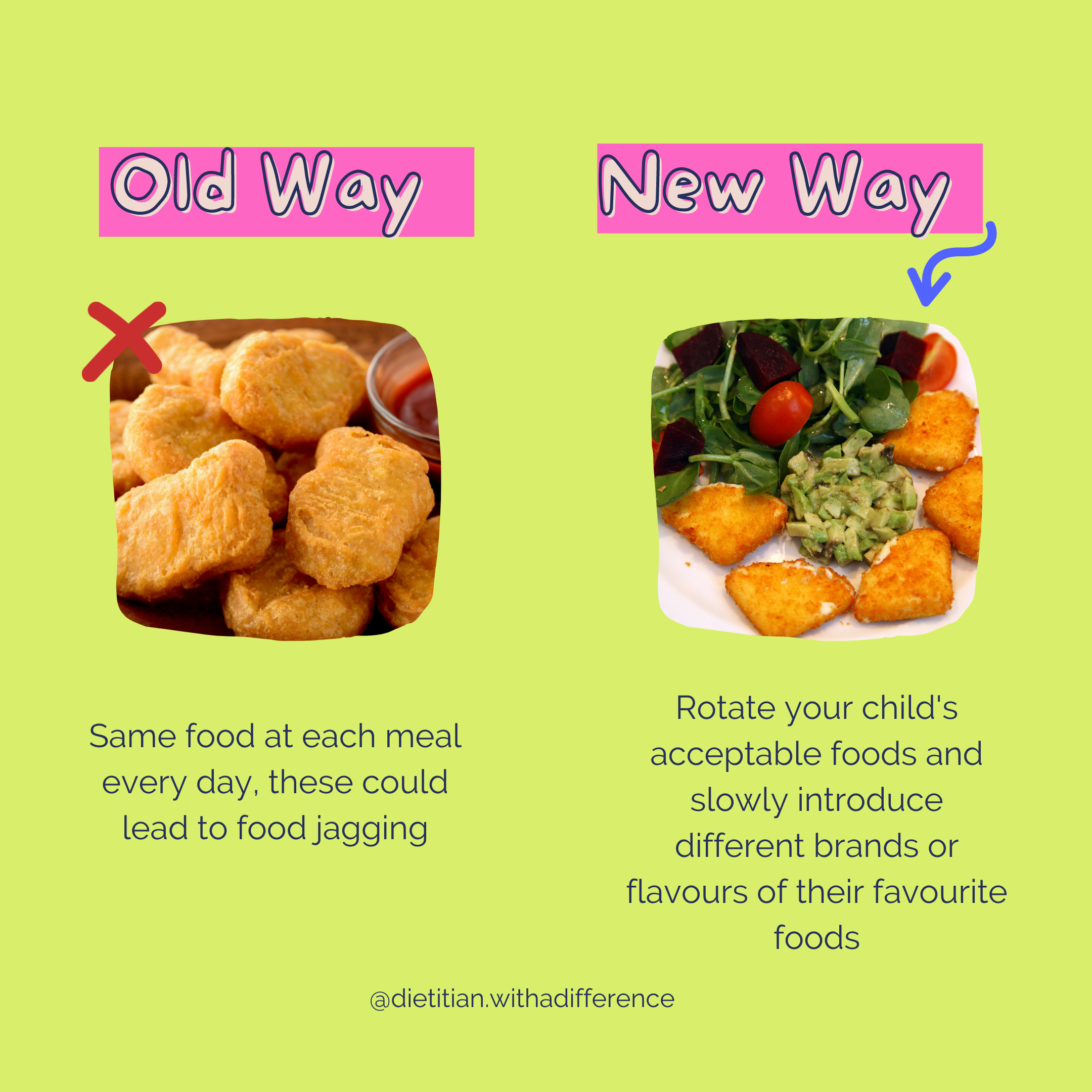If your child insists on eating the same food meal after meal, they might be experiencing a “food jag.” Food jagging occurs when a child repeatedly desires only a specific type or brand of food, prepared in a particular way, day after day. This behaviour is common and can happen at any age, including adolescence and adulthood (1)
Then suddenly they can cut that food out of their diet as they become so fed up of eating it over and over again.
What is Food Jagging?
Food jagging is typically a short-term phase that lasts several weeks and is considered a normal part of child development. However, if this behaviour persists for several months, it may become a concern.
Examples of food jagging in children
- Wanting a cup of milk alongside each snack or meal.
- Solely eating berries as their fruit source
- Only eating a certain cereal flavour and brand
- Asking for the same food for every meal
- Only eating foods of a certain colour; a common example of this is a child only eating white or beige foods.
In addition to what food jagging is and how to spot it, we will review the understood causes, methods of prevention, consequences, and treatment of food jagging.

Causes of food jagging
Children with sensory issues are often more prone to food jagging, as they may be sensitive to various smells, tastes, or textures. Additionally, if a child associates a food with a positive experience, they may crave it more frequently. Conversely, negative associations with certain foods can lead to avoidance and refusal to eat them..1
Preventing food jagging
Encouraging healthy eating habits can help prevent food jags. Here are some strategies:
- Set consistent meal and snack times to establish routine.
- Allow your child to serve themselves, letting them choose what and how much to eat.
- Promote positive mealtime experiences and avoid pressuring your child to clean their plate. Instead, teach them to listen to their hunger and fullness cues.
- Introduce new foods regularly and rotate the foods your child enjoys to prevent over-reliance on one type of food..2
Consequences of prolonged food jagging?
While most food jags are temporary, ongoing food jagging can lead to nutritional imbalances. This can be particularly concerning during early childhood development when adequate nutrient intake is crucial.
Potential consequences include:
- Nutrient deficiencies: Missing out on essential micro- and macronutrients.
- Low energy and body weight: Resulting from a limited diet.
- Dependence on a specific food for comfort and security.
If a food jag persists for several months, consider consulting with a pediatrician or dietitian.

Treating food jagging
There is no need to fret, as food jags are typically short-term and treatable. If your child is experiencing a food jag, you do not want to completely remove this food from their meals and force them to eat something new. This could result in a stressful mealtime for child and parent; and decreased sense of autonomy and safety for the child.
Instead, try to offer their food jag food with 1-2 other foods without any pressure to eat the other foods. This amount will be enough to allow them choices without feeling overwhelmed. You can also gently encourage your child to try new foods by setting the example and eating a healthy variety of foods yourself.4
Methods for treating food jags:
- Get your child involved in the meal prep and cooking process to encourage them to try new foods.4
- Offer a variety of foods.
- Allow your child to play with their food to familiarize themselves with the scent, texture, color, etc.
- Slowly incorporate different brands or flavours of their “favourite food”.
- Incorporate their “favourite food” into a meal with other foods.
- Don’t treat the food jag like this big problem, this may be counterproductive as it may result in increased stress in you and the child.
- Reduce the number of times a week a food is offered to reduce the reliance of that food.1
If you like more help with food jagging have a look at the Food Chaining Masterclass.

In conclusion, food jagging is a common part of childhood development, typically lasting a few weeks but sometimes extending to several months.
Sensory issues and prior experiences with food are often the root causes. Prevention is key, and can be achieved by fostering a healthy relationship with food through regular rotation and exposure to new options. If food jagging occurs, it can be managed with patience and gentle encouragement. But if it continues seek help from your paediatrician or a paediatric dietitian.
What food jags have your children experienced? How did you handle them?
If you’d like more like this, you can find more from me by downloading my fussy eating e-book or, for a more 1:1 help check out my Creating Confident Eater Programme

